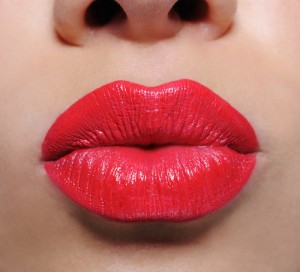Sex gets attention. We are biologically determined to notice sex content as relevant – it’s about the survival of the species. After 50 years of testing ads, Gallup&Robinson could tell that “the use of the erotic is a significantly above-average technique in communicating with the marketplace”, “although one of the more dangerous for the advertiser”. Why?
Deliver Amazing Shopping Experience. Download Free Ebook.
The vampire effect
Because of how men work. Almost half of them declare that they like sex-related campaigns. But it turns out that less than 10% of men exposed to the sexual ads were able to recall the brand that was advertised (compared to 19.8% for non-sexual ads).
In other words, erotic pictures suck up all the viewers’ attention, so they don’t notice anything else. Sex overshadows the message. Media Analyzer calls it “the vampire effect”.
 Media Analyzer team also tried to see whether men and women perceive such ads differently. What they discovered? Most men won’t see the brand beyond the large chest, while women manage to read the text and look at the offer. Taking into consideration that such ads are mostly addressed to men, one might want to rethink the „sex sells” cliche. As Jef Richards said, “In advertising, sex sells. But only if you’re selling sex.” Or something that works great with sex.
Media Analyzer team also tried to see whether men and women perceive such ads differently. What they discovered? Most men won’t see the brand beyond the large chest, while women manage to read the text and look at the offer. Taking into consideration that such ads are mostly addressed to men, one might want to rethink the „sex sells” cliche. As Jef Richards said, “In advertising, sex sells. But only if you’re selling sex.” Or something that works great with sex.
What can you sell with sex?
Nevertheless, as much as 23% of print ads use sexual imagery, Tom Reichert‘s study indicates. The research also explains that although we can see more and more sex-related ads, the increase occurs only within the brands that have always employed erotic connotations. These branches are:
• health and hygiene
• drugs and medicine
• clothing
• travel
• beauty
• alcohol
• entertainment.
According to Reichert, sex is primarily used to sell low-risk products bought on impulse. Other businesses risk at lot when entering the sexy zone, where “enticing” can quickly become “baffling” or even “desperate”.
Sexy ads for unsexy products
Now we have to head to the dark place. W will see some awkward attempts to sexualize something that should be left unsexy.
Below we give 3 examples that don’t need any commentary besides one: eroticism is a two-edged sword, and handling it requires a lot of precision.
To sum up: sex will only sell a sexual product. But it can give you a short-time buzz what prompts many marketers to try that way. Eroticism seems to be omnipresent.
After seeing silly ads, maybe we should take a look at the company that knows how to play sex.
The Anatomy of a Testosterone Whisperer
It’s hard to think of a brand that is more keen to arise sexual connotations than AXE, accused of sexism so many times that it’s impossible to count. Their ads, redolent of eroticism, always provoke discussions. One might say that their strategy is simple and dull, just like their fragrance. Have your noticed an interesting thing about AXE body spray? The smell doesn’t evolve: most fragrances have some molecules evaporating faster than others, so they change as you wear them in time. AXE doesn’t: it’s flat and straightforward. It doesn’t build the tension gradually; it just hits you with a blunt instrument.
But if it’s so easy, why myriads of copycats failed do replicate their achievement?
The key to their success, as Jason Feifer writes, is a meticulous research and keeping in touch with their target group. Each year new boys enter the age when they feel like „almost men” and start thinking about girls and body sprays (and other manly stuff). All AXE’s decisions: from composing a fragrance to each word in their campaigns are science and data-driven. As they audience changes so fast, they must stay informed on the latest trends. Every single one of their uber-risky ads, however, they seem careless and similar to a spontaneous joke made in a male company, has been precisely crafted. Each word, every gesture has been discussed and elaborated on.
So, to make your product look sexy and frivolous, you can’t be frivolous yourself.
Social media are no different
Many pictured social media as space for criticism and users standing against unrealistic and objectifying messages issued by brands exploiting our basic instincts and insecurities to make money. But it’s only part of the story.
Yep, users, often criticize brands’ decisions on social media. Do you remember the rage against Protein World’s Beach Body Ready campaign? Consumers were furious with being told how they should like to be allowed to sunbathe without shame. There were also many great campaigns that employed sexual rhetoric subversively – to act for the benefit of hurt women. It was the case of Girl Store: a charity initiative that helps young Indian women avoid being sold into sex slavery. On the website you can buy a girl – buy her life back by donating money for her education. The point of the whole experience is to draw attention to women objectification.
But don’t get over-enthusiastic: social media still love sex. As Dan Zarella researched, on Facebook posts including sexual references are 90% more likely to be shared, what makes sex the most powerful sharing trigger.
So SM provide us enough space to let us be both seduced by brands and express our criticism towards such practice.
But there is more. There is Tinder.
Marketing campaigns on Tinder
Tinder, a dating platform, might be a perfect place for marketers who believe that sex sells. But how did brands perform in that environment? Let’s take a look at two examples.
Domino’s Pizza
Domino’s Pizza celebrated Valentine’s Day with customers: is there a better way to fete love (for someone or yourself or pizza) that a tasty slice or two? So Dominos created a Tinder account: if you matched with it, you could get a free pizza or a discount.
The campaign was brilliant and engaging: the brand interacted with 234,355 consumers, creating a lot of social media buzz. And it cost next to nothing: 0.00008 pence per impression.
Calvin Klein
Calvin Klein is known for its passion for controversy and sex references. Their recent campaign, “Raw texts, real stories”, was inspired by Tinder and has the ambition to Begin a conversation about how social media and the internet changed the way we flirt and seduce.
It’s bold and racy.
To sum up
Beware of sex. Beware of overusing it, and beware of thinking that spicing your ad will automatically make it attractive. If your product doesn’t fall into the categories that are naturally associated with eroticism, you need to be extremely careful.
The inspiring case here should be the Dominos Pizza. They appeared on Tinder but focused on building relationships and giving something nice. Although the campaign happened in the highly stimulating environment (did you see how Calvin Klein depicted it?), the brand didn’t try to exploit sexuality. It was rather a vehicle to deliver value. And it was funny: laughter works great as a shield.

 Follow
Follow
















